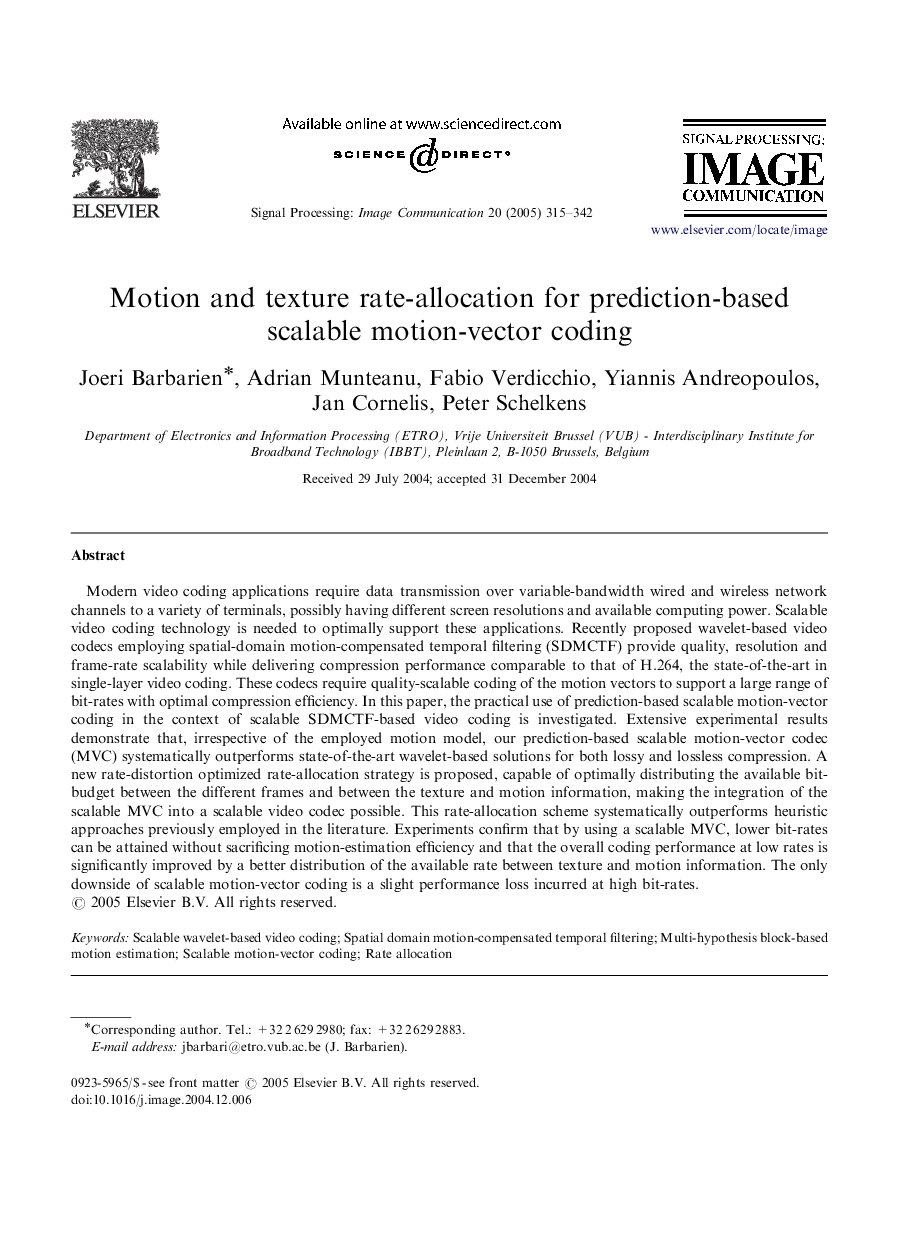| Article ID | Journal | Published Year | Pages | File Type |
|---|---|---|---|---|
| 10362712 | Signal Processing: Image Communication | 2005 | 28 Pages |
Abstract
Modern video coding applications require data transmission over variable-bandwidth wired and wireless network channels to a variety of terminals, possibly having different screen resolutions and available computing power. Scalable video coding technology is needed to optimally support these applications. Recently proposed wavelet-based video codecs employing spatial-domain motion-compensated temporal filtering (SDMCTF) provide quality, resolution and frame-rate scalability while delivering compression performance comparable to that of H.264, the state-of-the-art in single-layer video coding. These codecs require quality-scalable coding of the motion vectors to support a large range of bit-rates with optimal compression efficiency. In this paper, the practical use of prediction-based scalable motion-vector coding in the context of scalable SDMCTF-based video coding is investigated. Extensive experimental results demonstrate that, irrespective of the employed motion model, our prediction-based scalable motion-vector codec (MVC) systematically outperforms state-of-the-art wavelet-based solutions for both lossy and lossless compression. A new rate-distortion optimized rate-allocation strategy is proposed, capable of optimally distributing the available bit-budget between the different frames and between the texture and motion information, making the integration of the scalable MVC into a scalable video codec possible. This rate-allocation scheme systematically outperforms heuristic approaches previously employed in the literature. Experiments confirm that by using a scalable MVC, lower bit-rates can be attained without sacrificing motion-estimation efficiency and that the overall coding performance at low rates is significantly improved by a better distribution of the available rate between texture and motion information. The only downside of scalable motion-vector coding is a slight performance loss incurred at high bit-rates.
Keywords
Related Topics
Physical Sciences and Engineering
Computer Science
Computer Vision and Pattern Recognition
Authors
Joeri Barbarien, Adrian Munteanu, Fabio Verdicchio, Yiannis Andreopoulos, Jan Cornelis, Peter Schelkens,
